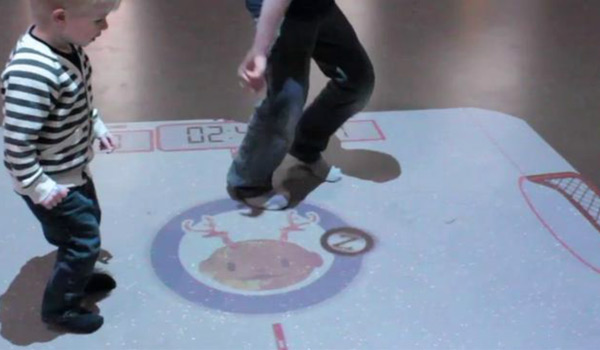Last Updated on August 28, 2012 by New-Startups Team
Gesture and interactive displays or platforms will certainly be in the forefront of our everyday lives in the near future. Toronto agency Thinking Box saw huge enrollment by users when they implemented interactive windows at four traffic heavy Starbucks locations in Toronto and Vancouver. With delightful animations the campaign garnered over 3,000,000 impressions and over 20,000 interactions over just 43 days.

Winnipeg’s PO-MOtion has seen similar success for their interactive digital display solutions, including gesture and motion based interactivity. Used by Air New Zealand, Google, and Samsung, the platform allows creative professionals to build and publish their own content without having to learn any coding, in order to allow anyone to use PO-MOtion for everything from permanent installations in museums, to tradeshow displays to educational games in classrooms. Watch the videos below to see how a projection installation got kids enrolled in interactive game play.
Founded by Meghan Athavale – Artistic Director/CEO and Curtis Wachs – Technical Director/COO, PO-MOtion is a more affordable, hardware and platform agnostic, designed for consumer electronics, and can be purchased and downloaded directly from their website. While competitors in the industry sell hardware-specific solutions (often much more expensive), and require that you contact them for a quote. The PO-MOtion team told us:
“The price difference is notable – most of our competitors sell systems with fixed content or complex SDKs for between $7000-$12,000 (including hardware which must be shipped and/or maintained by the company). By contrast, PO-MOtion can be downloaded instantly for less than $100 and will work on the computer/projector/camera setup that most of our users already own. Users design their own content or purchase pre-made content from the website as they need it.”
PO-MOtion works with any web camera, computer, and projector to create highly responsive interactive projections. There is a version that also works with the Kinect sensor and ASUS Xtion for people who really want to get serious about motion tracking. The software includes an online content creation platform so non-technical creative types can design their own interactive effects and games. There is also a community of content contributors making interactive content for PO-MOtion, making it very versatile and affordable. PO-MOtion also comes in two packages, one of which works with Kinect Technology.
“PO-MOtion uses the 3D depth map from the Kinect to track motion data. There are a lot of great reasons to use this information to track user activity, but our favorite is that it can differentiate people from random objects, and has the ability to track true gestures. So we can see exactly how many people are using our displays and how they’re acting on them. This is a really powerful advantage over regular cameras. Right now we’re in the process of designing our own camera, specifically for professional installations of PO-MOtion.”
“PO-MOtion brings light to life. We dream of a day when people will be able to talk to our displays, and they will talk back.”

Interactive gesture and motion based technology is a very interesting trend and should see it appear more and more everywhere we go to engage us with different experiences. Tools like PO-MOtion make it more affordable and accessible, but what would you create? We’d love to know where and how you would implement a interactive gesture controls for viewer engagement.